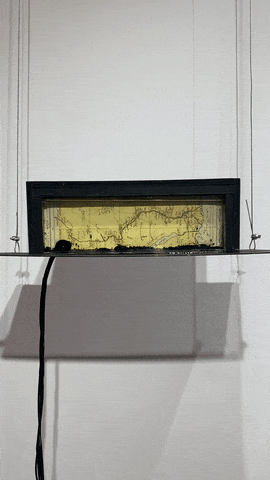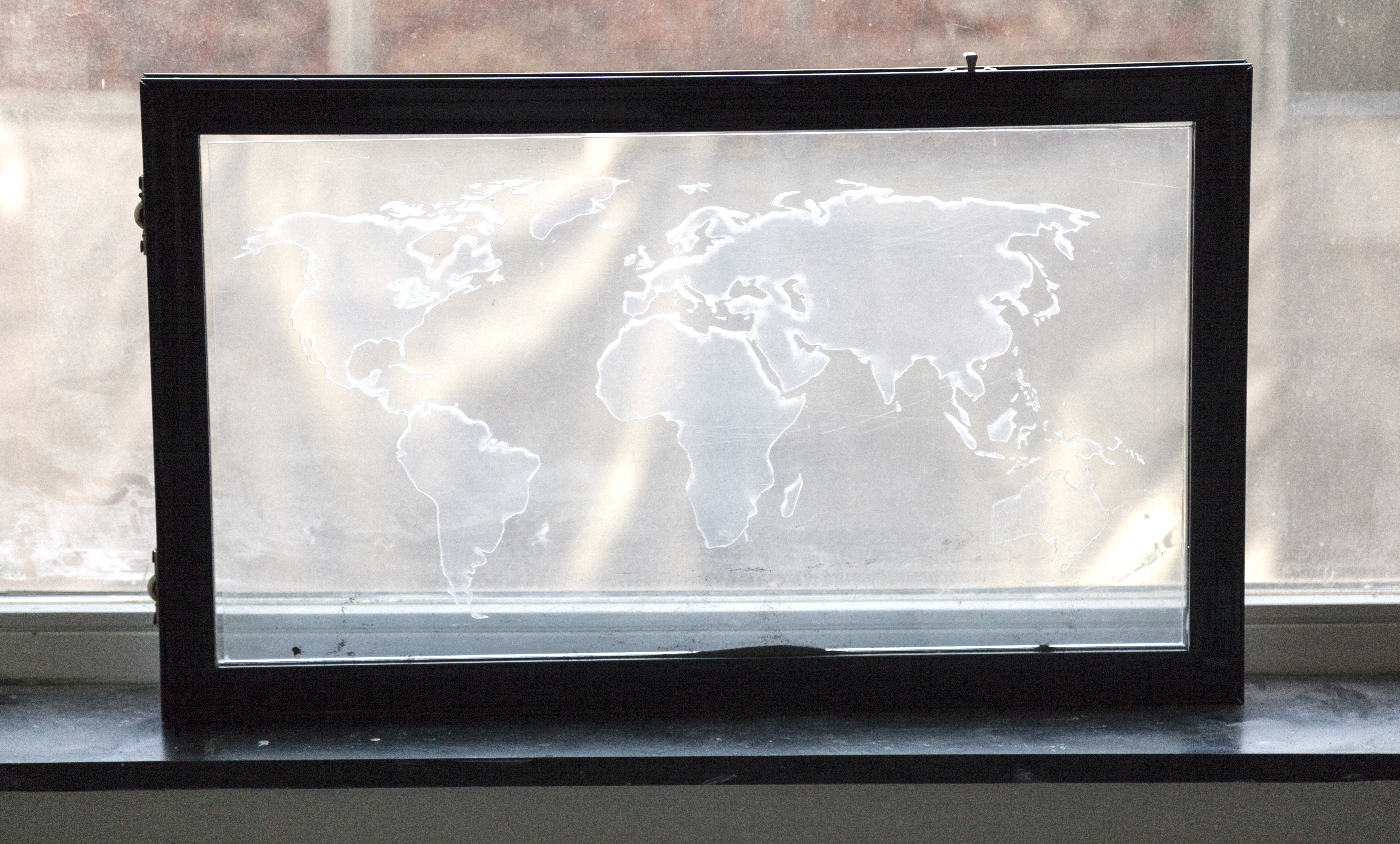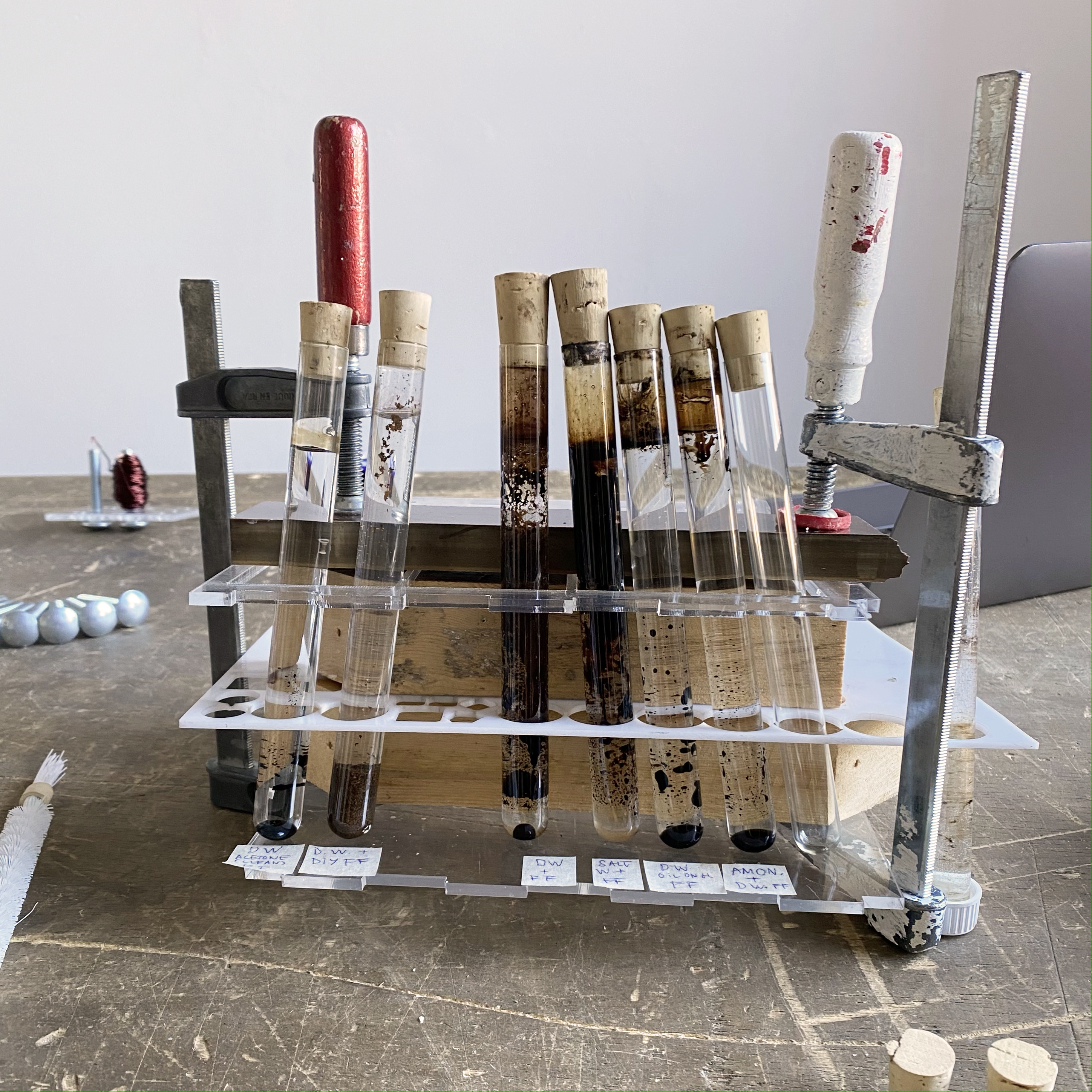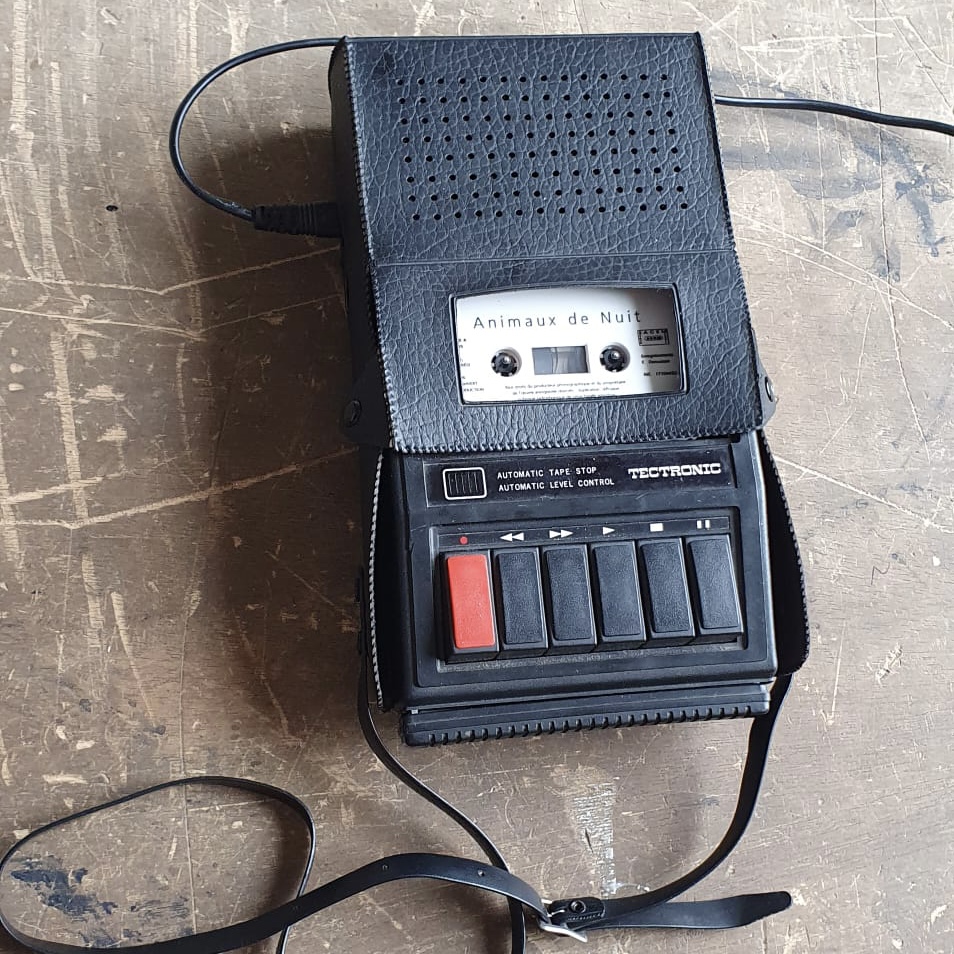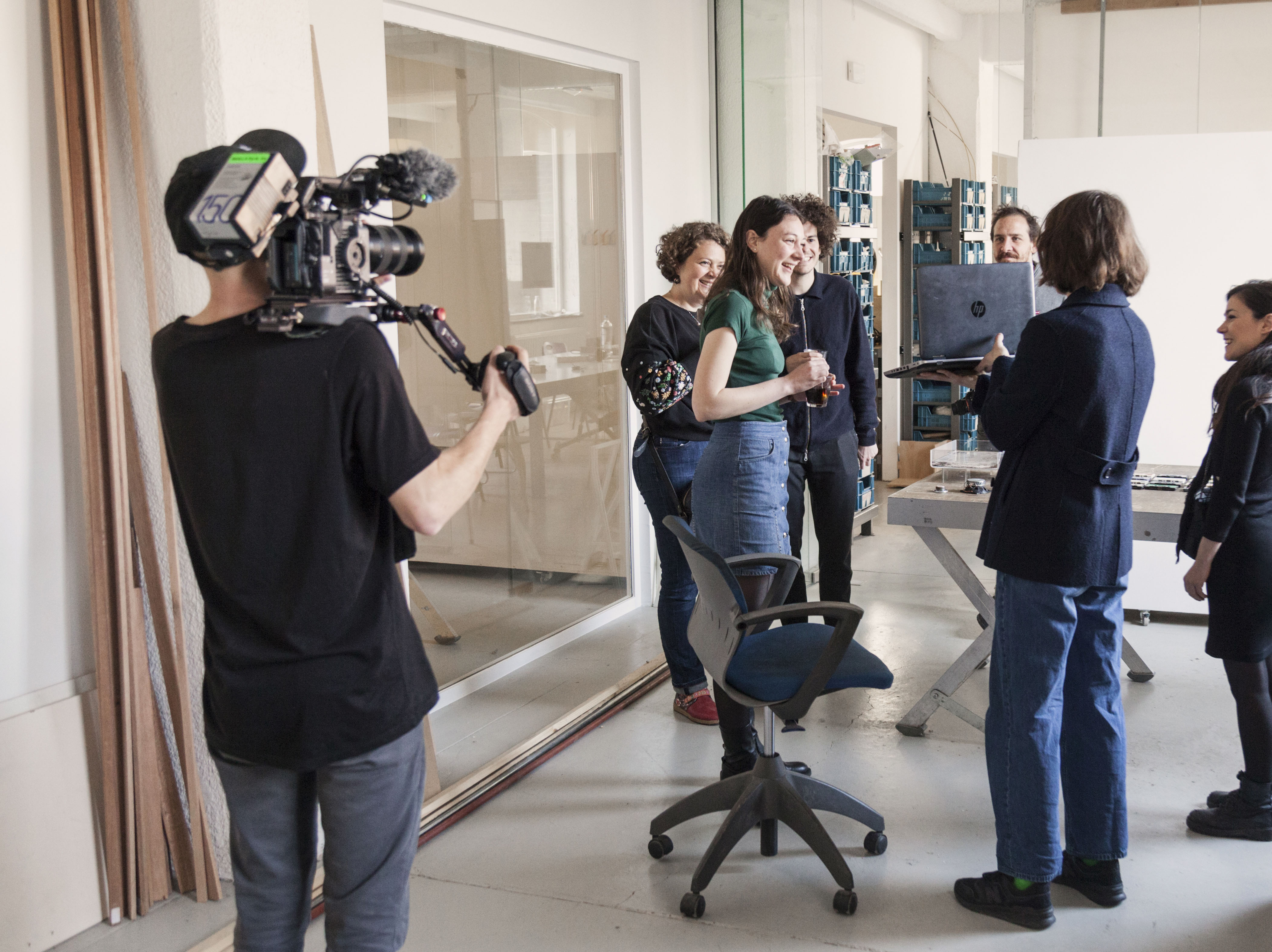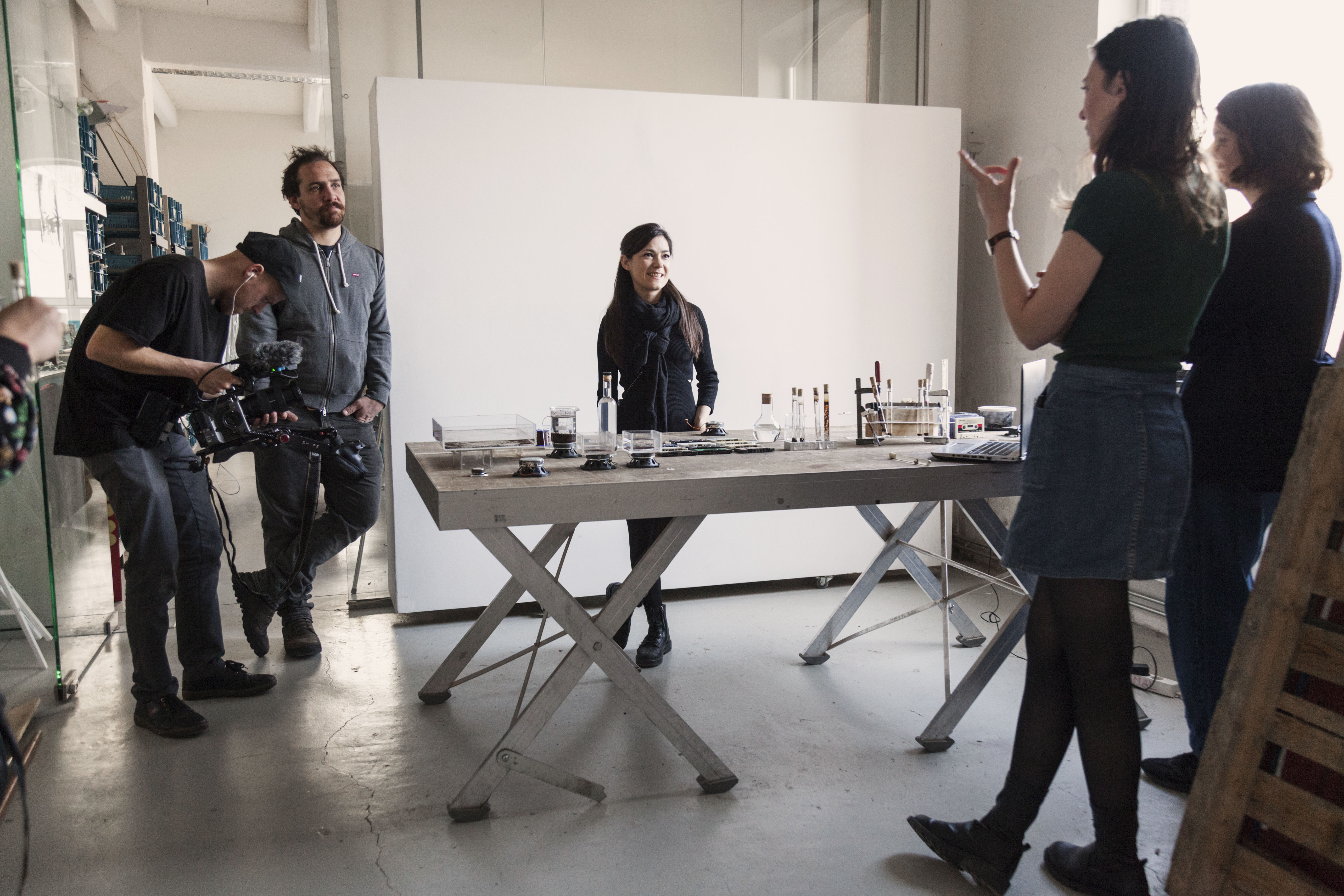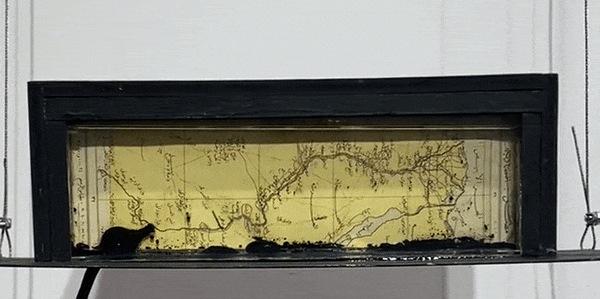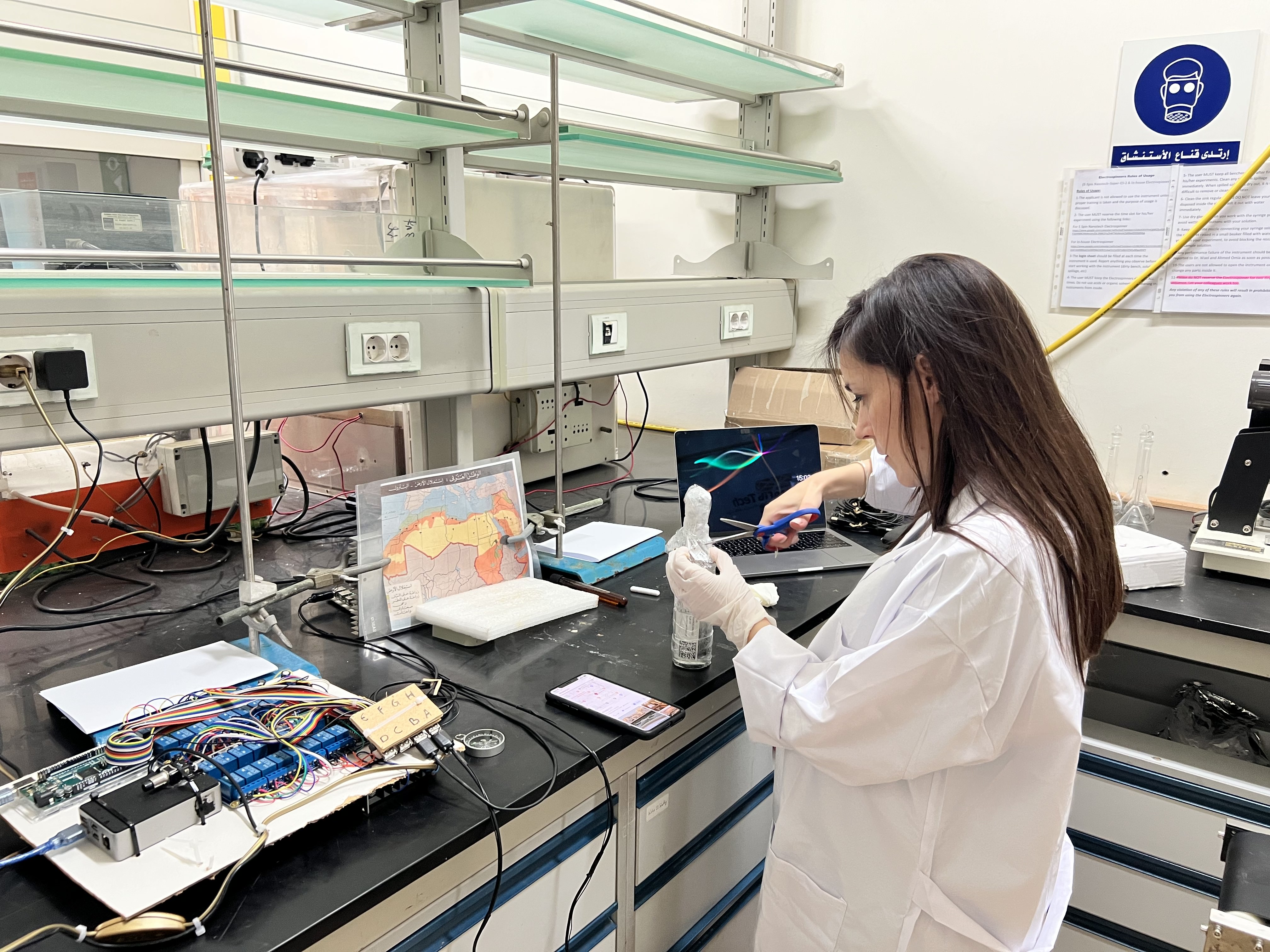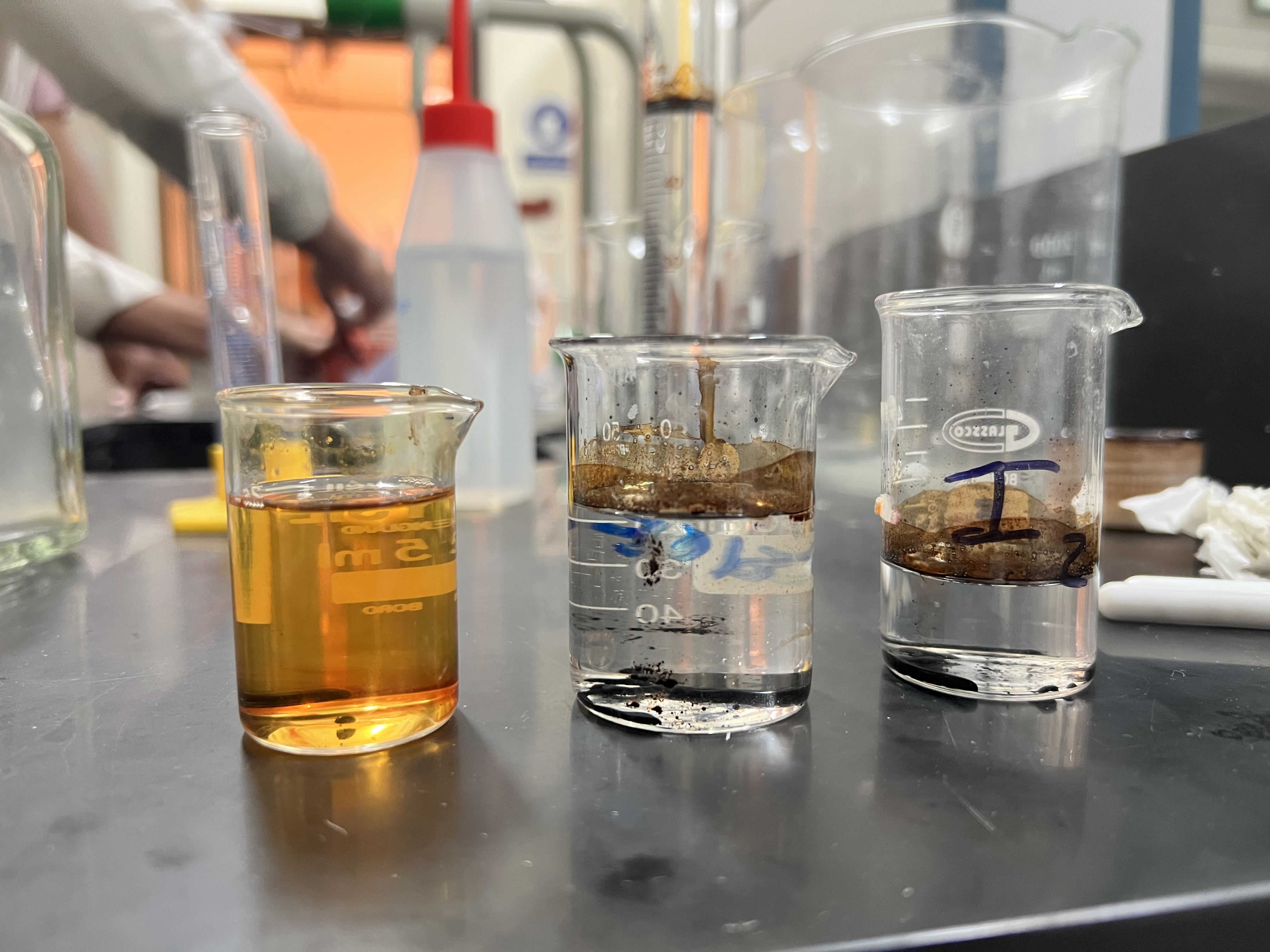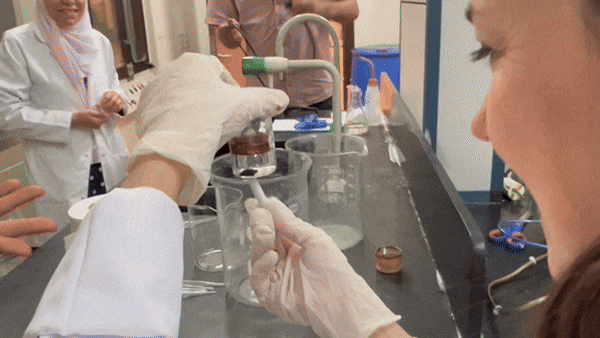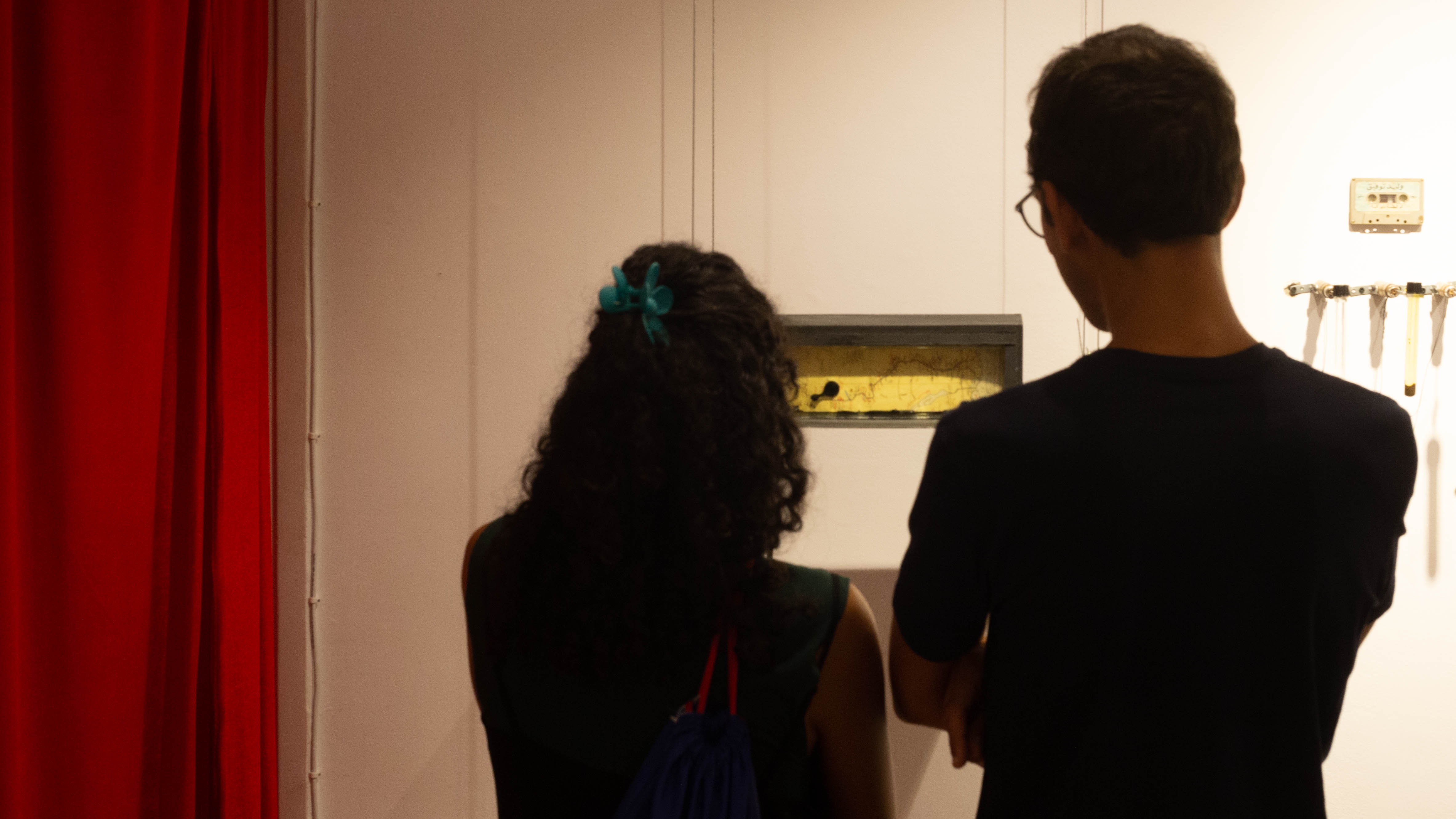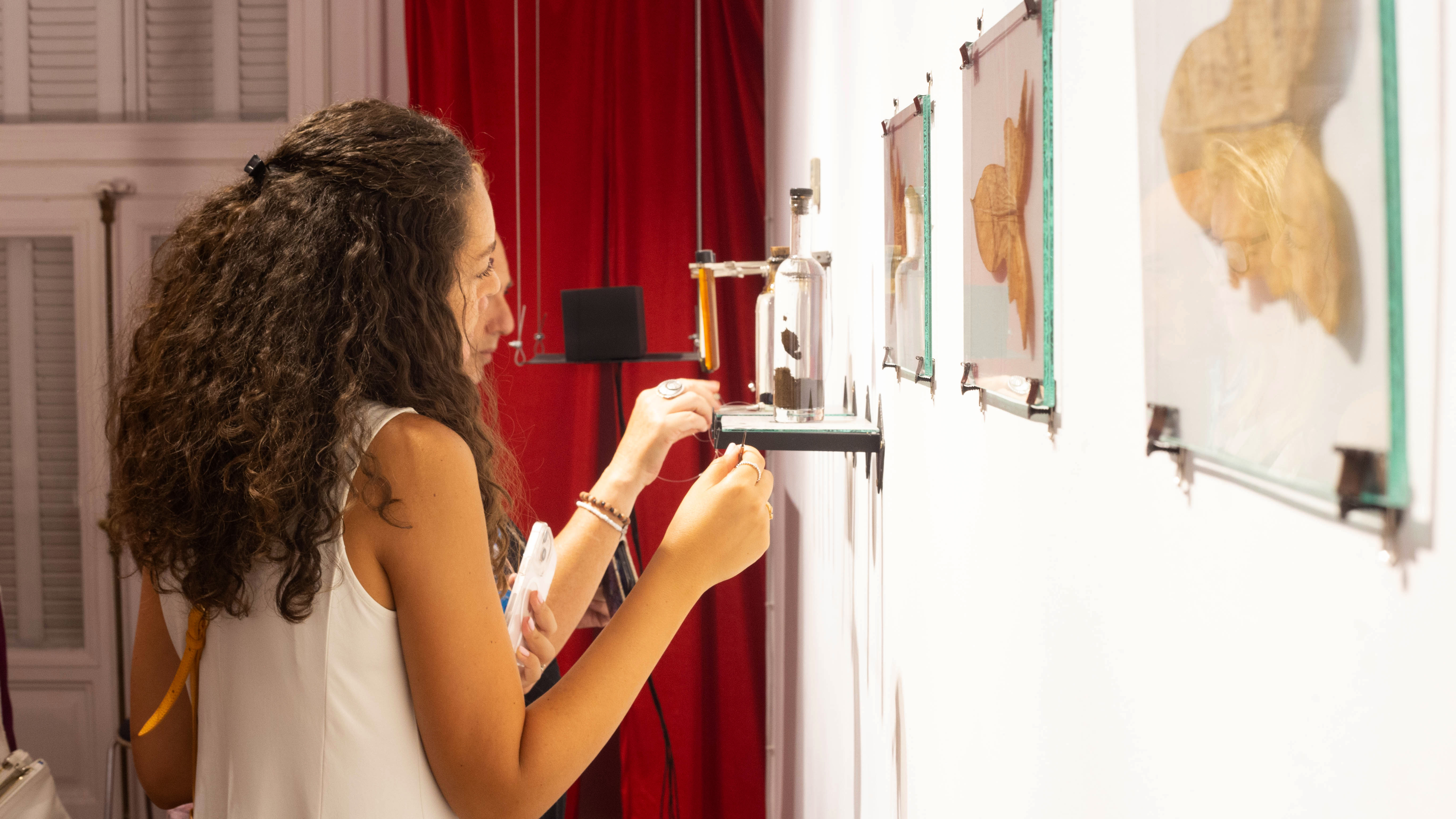SUPERTOPIA
BOZAR - Centre for Fine Arts Brussels
iMAL, FabLab
GOETHE Institut Brussels
GOETHE Institut Kairo
Cairotronica
The American University of Cairo (Prof Wael
Mamdouh and
Noha El Salakawy)
︎︎︎ FERROFLUID from old audio tapes
︎︎︎ LASER printed Mercator world map
︎︎︎ DOUBLE-glazed repurposed window
︎︎︎ MAGNETS
The project Supertopia makes use of maps to represent movement and displacement, while pointing out characteristics of its own medium – ferrofluid suspended in a bespoke solution – particularly the electromagnetic forces present in the technologies we use, as well as the geological connection that such technologies have through the use of extractive practices with serious ecological repercussions.
Even today, with a significant decrease in paper-based maps and the use of their digital counterparts, there is a sense of “egocentric mapping”: the user’s desire to first locate him or herself on the digital map and zoom in to see that location. It literally centres individuals, while also elevating us like gods looking down upon the earth from a divine viewpoint. Surveying the whole world in one look, we witness the events apparently from a distance, as if suspended in time.
Supertopia uses this viewpoint to instil a visual and tangible model of the impact our collective actions are taking on our “blue marble”.
For the first part of the experimental research at iMAL (BE), I recycled audio cassette tapes in a water medium to represent human displacement, using the Flemish Gerardus Mercator’s 1569 world map projection. The polyester tape from old cassettes has electromagnetic properties, so I removed this layer with a solvent and used it for the project. The vertical display offered by a repurposed double-glazed window served as proof of concept for the recycled ferrofluid and to conduct tests with different liquid substrates.
Later, in the second part of the AIR in Egypt, commercial ferrofluid was used to reflect on the extractive practices that technology entails while addressing the ecological reconfiguration triggered by such endeavours. Ferrofluid is a colloidal fluid that reacts in the presence of a magnetic field. It is composed of these nanoparticles suspended in a carrier liquid. This part of the research was developed at The American University of Cairo, with Prof. Wael Mamdouh and Noha El Salakawy.
This second piece uses a timeworn school map acquired at the second-hand market in Cairo. It represents the raw materials Egypt has, as well as their extraction locations, mostly concentrated along the Nile, and their transport routes. The map is annotated with a red coloured pencil in some areas.
Above this map, a dense substance moves and swirls around the enclosure, passing from point to point in a sequence. These staccato movements of the thick glob of ferrofluid mimic the travel routes of raw materials within the Egyptian territory, namely from the south to the north of this map. However, the map is presented sideways so that the fluid travels from left to right and then back again.
The piece itself could be seen as a call to action. There’s a red button the visitor has to press in order to make it run. However, the visitor has no idea what the button will activate, if anything. Would you press the big red button?
The Halaqat Media Arts Residency involved prototyping, experimenting, and exchanging ideas between artists from different backgrounds, as well as local cultural players: “The residency was an opportunity for the artists to explore common grounds, share knowledge and provide each other with constructive feedback on the work they are developing. Nourished by one another, personal projects were developed, influenced by the larger topic of ‘Politics of Space and Bodies’ to which each of the artists responds in their work. The four creative minds explored topics such as: climate migration, the digital self, the definition of past, present and future imaginaries, and representations of power” (Halaqat Project).
The European project Halaqat is implemented by the Goethe-Institut in collaboration with Bozar - Centre for Fine Arts Brussels. Halaqat is co-funded by the European Commission (under the designation: EU-LAS CULTURE), the Goethe-Institut and Bozar.
Check the video Halaqat - A Media Arts Residency Between Two Shores | Bozar here.
Check the Halaqat: Lessons for the Future publication here.
Thank you:
Ahmed Ellaithy, Frederike Berje, Geological Society in Egypt, May Mostafa, Maud Qmar, Noha El Salakawy (AUC), Nikolas Gomes, Prof. Wael Mamdouh (AUC), Prof. Nuno João Silva (UA), Sally Samaan, Vasco Barbosa, Xavier Klein.
Photos © Samir Amezian, Ahmed Saaty, and Ana Teresa Vicente
![]()
![]()
![]()
![]()
![]()
![]()
![]()
![]()
![]()
![]()
![]()
![]()
![]()
![]()
![]()
![]()
![]()
![]()
![]()
![]()
![]()
![]()
![]()
![]()
![]()
![]()
![]()
![]()
![]()
![]()
![]()
![]()
![]()
![]()
![]()
![]()
![]()
![]()
Even today, with a significant decrease in paper-based maps and the use of their digital counterparts, there is a sense of “egocentric mapping”: the user’s desire to first locate him or herself on the digital map and zoom in to see that location. It literally centres individuals, while also elevating us like gods looking down upon the earth from a divine viewpoint. Surveying the whole world in one look, we witness the events apparently from a distance, as if suspended in time.
Supertopia uses this viewpoint to instil a visual and tangible model of the impact our collective actions are taking on our “blue marble”.
For the first part of the experimental research at iMAL (BE), I recycled audio cassette tapes in a water medium to represent human displacement, using the Flemish Gerardus Mercator’s 1569 world map projection. The polyester tape from old cassettes has electromagnetic properties, so I removed this layer with a solvent and used it for the project. The vertical display offered by a repurposed double-glazed window served as proof of concept for the recycled ferrofluid and to conduct tests with different liquid substrates.
Later, in the second part of the AIR in Egypt, commercial ferrofluid was used to reflect on the extractive practices that technology entails while addressing the ecological reconfiguration triggered by such endeavours. Ferrofluid is a colloidal fluid that reacts in the presence of a magnetic field. It is composed of these nanoparticles suspended in a carrier liquid. This part of the research was developed at The American University of Cairo, with Prof. Wael Mamdouh and Noha El Salakawy.
This second piece uses a timeworn school map acquired at the second-hand market in Cairo. It represents the raw materials Egypt has, as well as their extraction locations, mostly concentrated along the Nile, and their transport routes. The map is annotated with a red coloured pencil in some areas.
Above this map, a dense substance moves and swirls around the enclosure, passing from point to point in a sequence. These staccato movements of the thick glob of ferrofluid mimic the travel routes of raw materials within the Egyptian territory, namely from the south to the north of this map. However, the map is presented sideways so that the fluid travels from left to right and then back again.
The piece itself could be seen as a call to action. There’s a red button the visitor has to press in order to make it run. However, the visitor has no idea what the button will activate, if anything. Would you press the big red button?
The Halaqat Media Arts Residency involved prototyping, experimenting, and exchanging ideas between artists from different backgrounds, as well as local cultural players: “The residency was an opportunity for the artists to explore common grounds, share knowledge and provide each other with constructive feedback on the work they are developing. Nourished by one another, personal projects were developed, influenced by the larger topic of ‘Politics of Space and Bodies’ to which each of the artists responds in their work. The four creative minds explored topics such as: climate migration, the digital self, the definition of past, present and future imaginaries, and representations of power” (Halaqat Project).
The European project Halaqat is implemented by the Goethe-Institut in collaboration with Bozar - Centre for Fine Arts Brussels. Halaqat is co-funded by the European Commission (under the designation: EU-LAS CULTURE), the Goethe-Institut and Bozar.
Check the video Halaqat - A Media Arts Residency Between Two Shores | Bozar here.
Check the Halaqat: Lessons for the Future publication here.
Thank you:
Ahmed Ellaithy, Frederike Berje, Geological Society in Egypt, May Mostafa, Maud Qmar, Noha El Salakawy (AUC), Nikolas Gomes, Prof. Wael Mamdouh (AUC), Prof. Nuno João Silva (UA), Sally Samaan, Vasco Barbosa, Xavier Klein.
Photos © Samir Amezian, Ahmed Saaty, and Ana Teresa Vicente
